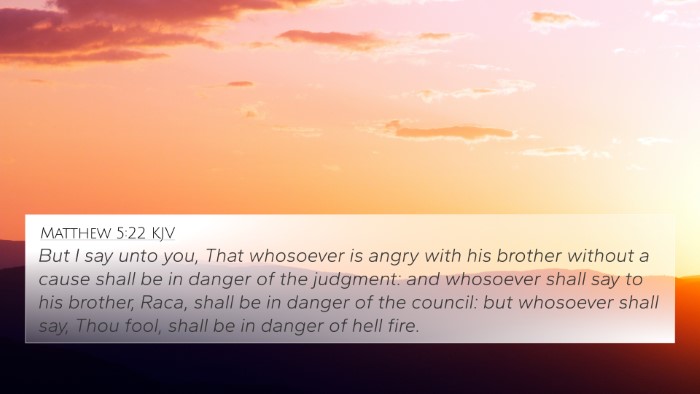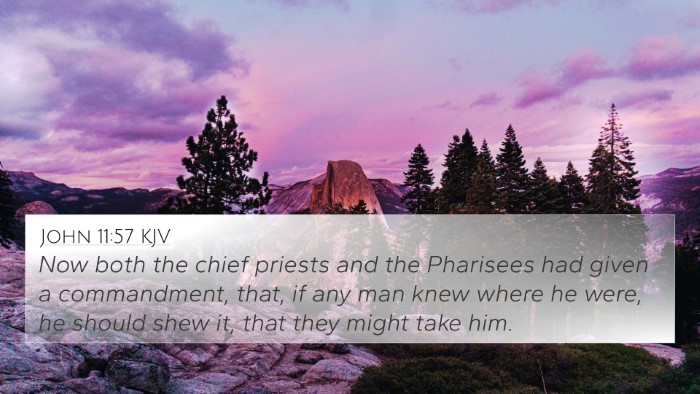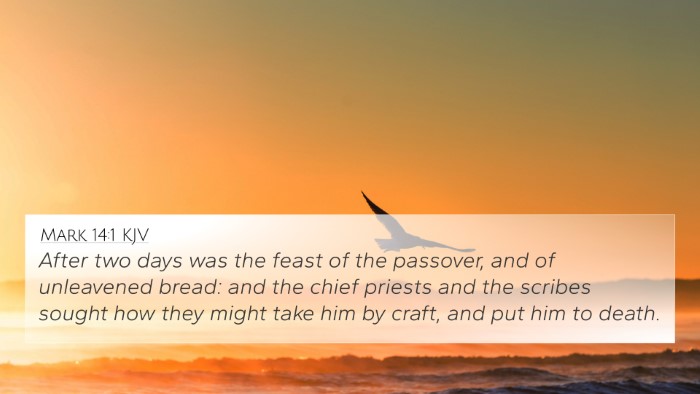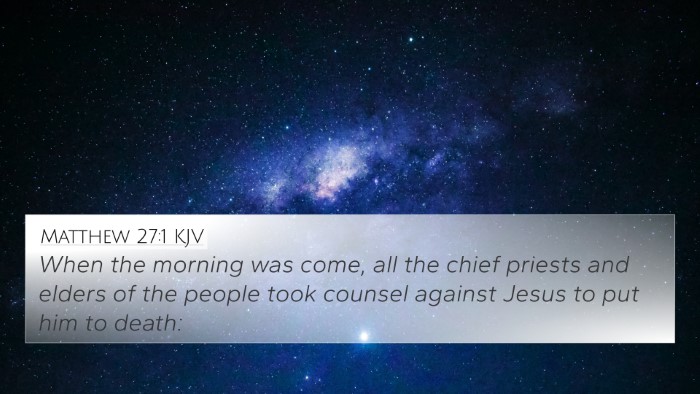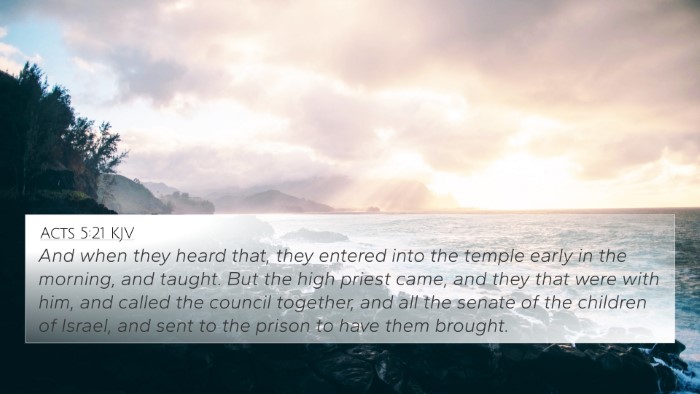Understanding John 11:47
John 11:47 states, "Then gathered the chief priests and the Pharisees a council, and said, What do we? for this man doeth many miracles." This verse captures a pivotal moment in the Gospel of John, where religious leaders become increasingly concerned about Jesus' miracles and growing influence.
Summary of Meaning
The chief priests and Pharisees convene to consider the implications of Jesus' miraculous works. This council represents the religious authority of the time, demonstrating their anxiety about losing control and the potential for civil unrest due to Jesus' activities.
Insights from Public Domain Commentaries
- Matthew Henry: Henry emphasizes the fear and jealousy that arise from the miracles performed by Jesus. He points out that the council’s gathering indicates a deep-seated worry about the authority of Jesus and how his works challenge their position.
- Albert Barnes: Barnes notes that the miracles of Jesus were undeniable facts, and the leaders could not dismiss them. He highlights that their discussion shows a critical juncture where faith could lead the leaders to recognize Jesus as the Messiah, though they chose fear and opposition instead.
- Adam Clarke: Clarke elaborates on the significance of the gathered council, framing it as a desperate attempt to suppress what they could not control. He discusses the implications of the fear of losing power and influence over the people, ultimately leading to their decision to plot against Jesus.
Importance of Context
The events in John 11:47 must be understood within the larger narrative of the Gospels, where tension between Jesus and the religious leaders escalates. This council meeting foreshadows the trials and events leading to the crucifixion.
Cross-References
This verse can be linked to several important Bible verses that enhance its understanding:
- John 11:48: Relates to fears of the Romans intervening due to unrest caused by Jesus.
- Matthew 21:11: Discusses the people proclaiming Jesus as a prophet, highlighting rising popularity.
- Luke 19:39-40: The Pharisees' attempt to silence the acclaim of Jesus shows the pushback against His influence.
- John 5:16: Earlier tensions regarding healing on the Sabbath reveal ongoing conflicts with the law and Jesus’ actions.
- Mark 3:6: Illustrates the plotting of the Pharisees against Jesus, emphasizing their motives.
- Acts 4:15-17: Early church leaders face similar conflicts with the religious authorities in spreading the Gospel.
- John 9:16: The debate about Jesus healing a blind man reflects ongoing concerns of the religious leaders regarding miracles.
Thematic Connections
The themes presented in John 11:47 resonate with overarching Biblical narratives regarding authority, faith, and the dynamics between various levels of religious understanding. The fear of Jesus’ influence and his miraculous acts contrasts sharply with the intended purpose of religious leaders, suggesting a disconnect between genuine faith and self-preservation.
Practical Implications for Study
For those studying the Bible, understanding the connections between verses like John 11:47 and related passages can enrich one’s interpretation and application. Utilizing tools such as Bible concordances and.Bible cross-reference guides can provide clarity on how various scriptures interact with and illuminate each other.
Conclusion
John 11:47 serves as a crucial reminder of the conflicts faced by Jesus during his ministry. The fear among the religious leaders reflects a universal theme of fear of change and the unknown. By studying this verse alongside its cross-references, one gains a deeper understanding of the Gospel and its implications for faith today.





